If you are looking to buy a new coolant, you may discover that it comes in different colors, mainly green and red. There has been a pretty active discussion concerning the difference between “Red” and “Green” coolant. It is necessary to clarify certain myths and misunderstandings regarding both of these Types.
So What is Green coolant, and what is red? What is the difference between them? Which one is better? Could I mix red and green coolants ?
Green coolant is the conventional (Ethylene Glycol-based) and most commonly used (coolant) color (based on Ethylene Glycol). While The red coolant is typically Organic Acid Technology, designed to last longer and be more compatible with aluminum radiators.
Antifreeze Components
Antifreeze is a chemical ingredient that is added to a fluid to prevent it from freezing. Adding antifreeze to a coolant will bring down its freezing point while simultaneously raising its boiling point. This is why antifreezes are used.
Ethylene glycol and propylene glycol are the primary components that make up antifreeze. It is possible to create a coolant by combining an antifreeze with water and using this combination. A chemical compound used to regulate an engine’s temperature is referred to as a coolant.
Red Coolant
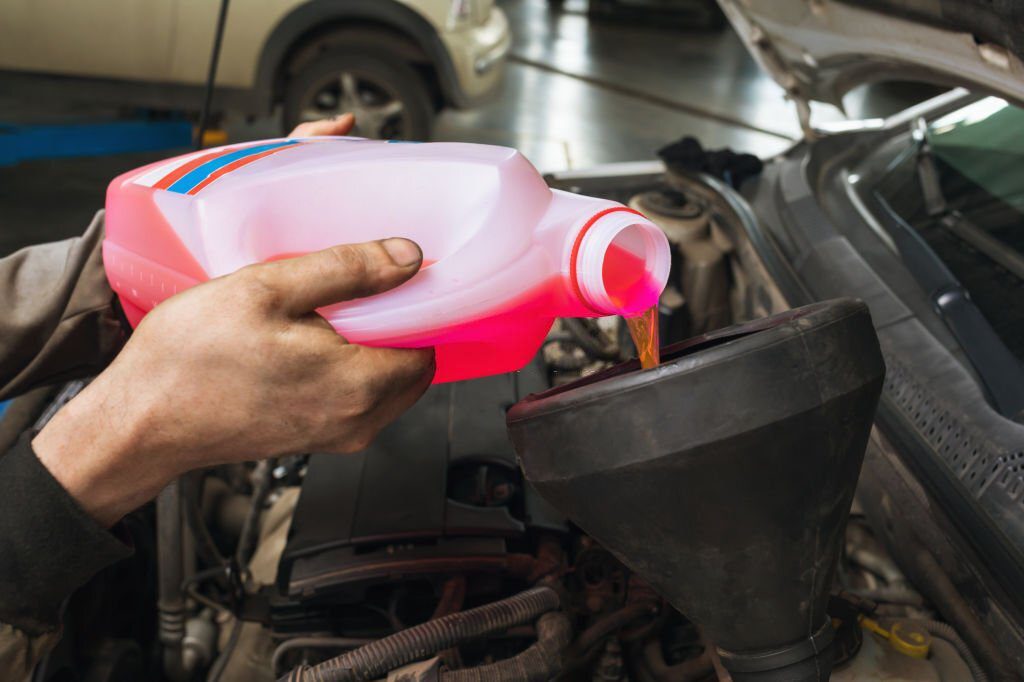
An auto mechanic pours antifreeze into the cooling system of a car engine
Red coolant Lasts longer than other types. After the inorganic acid technology (IAT), the organic acid technology( OAT), was founded. This allowed different colored antifreeze to be made (this technology produced orange-colored coolant formulations).
Later, IAT and OAT were combined to make HOAT, which stands for hybrid organic acid technology. This type of hybrid technology makes it possible to make red antifreeze. Red antifreeze is more stable than green antifreeze and other older antifreeze compounds. It also makes the water pump last longer.
Green Coolant
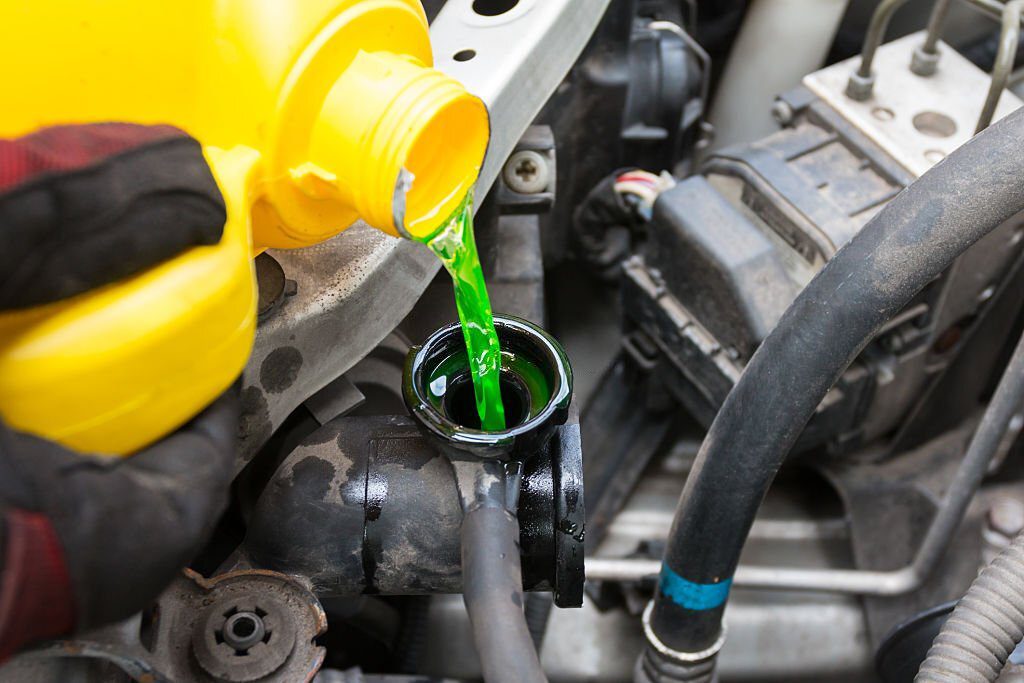
Coolant usually comes in green color. In the past, all kinds of Coolants came in green color. Most of the time, it is mixed with equal parts water. After this step, the mixture is called coolant and put into the engine’s radiator. The antifreeze moves heat to the radiator, which keeps the coolant from freezing.
Green antifreeze is made using inorganic acid technology (IAT). In this method, the chemical base of the antifreeze is either ethylene glycol or propylene glycol. There are also things like silicates or phosphates added to this mix.
Longevity
The longevity of red coolant is significantly greater than that of green antifreeze, which is the primary difference between the two types.
Green is the old type antifreeze, and the glycol in it might last up to three years at most. So you have to change the coolant every 3 years or 15,000 miles.
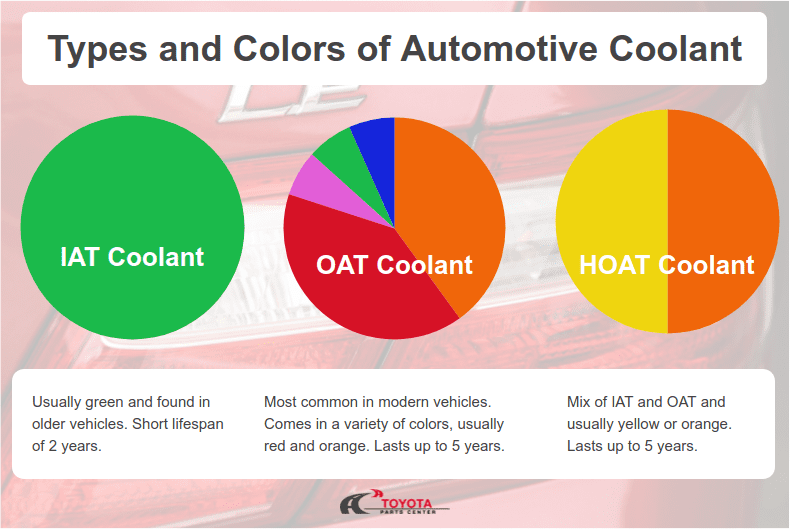
while other colors of coolants, and red is one of them. It can usually last at least five years or 150,000 miles.
Production Technology
Red antifreeze is made from HOAT (hybrid organic acid technology), which is a combination of inorganic acid technology and organic acid technology. While Green antifreeze is produced using Inorganic Acid Technology
Stability
When you compare red antifreeze to green coolant in terms of stability, red Coolant is more stable.
How to Change the Antifreeze in Your Car?
If you just put two different types of antifreeze in your car by accident or if the antifreeze you already have is getting close to its expiration date, you’ll need to flush out the antifreeze in your system and put in a new batch. The good news is that changing the antifreeze in your car is an easy task that you can do at home.
Follow these steps to change the antifreeze in your car the right way:
How to Get Rid of Your Old Antifreeze (step by step)
Preparation
Set up your work area so that this task is as safe and easy as it can be. Start by parking your car on a flat surface, and don’t try to change the antifreeze until you can feel that the engine and radiator are cool. Also, you must have a large drain pan on hand to collect any old antifreeze that will drip while you’re changing it.
Drain Old coolant
Open the cap on top of the radiator that says “Fill.” If your car has a separate reservoir for antifreeze, open the fill cap on that one as well.
Find the drain on the bottom of your radiator and put the drain pan under it. If you can’t find the drain on your radiator, you should be able to find that details in your owner’s manual.
If you can’t find the drain on your radiator, you should be able to find that details in your owner’s manual.
Open the drain and let the old antifreeze flow into the drain pan. Close the drain after the antifreeze has drained out.
Flush
Take the flush you bought and pour it into the radiator. Follow the instructions on the product and make sure there is enough water in your radiator.
Follow the instructions on the product and make sure there is enough water in your radiator.
Replace the radiator and antifreeze reservoir caps, and run your engine for about 10 minutes, or until it reaches its normal operating temperature. When it does, turn the engine off and let it cool down.
Open the radiator and antifreeze reservoir caps and pour the radiator flush product into your drain pan.
Put all of your old antifreeze in a sealed container and take it to a recycling center.
Add new coolant
Once all of the old antifreeze is out of your cooling system, fill your radiator with the new coolant. If you need to dilute your coolant before adding it, make sure to only use distilled water.
Don’t put the radiator cap back on, and let the engine run for a few minutes. Keep an eye on the antifreeze through the open cap, and when it stops bubbling, put the cap back on.
Check how much antifreeze is in the tank, and if you need to, add more.
Make sure that the radiator cap and the reservoir cap are both closed and tight. You should now be done changing the antifreeze in your car.
Conclusion
The green coolant was the older type of coolant. As technology advanced, better coolants like orange and red were made. The main difference between red and green coolant is that red antifreeze lasts longer.
FAQ
Can I mix Red and Green Coolants?
If you mixed green and red antifreeze together, you’d get a thick gel that wouldn’t move through your cooling system as it should. This can cause your car to overheat and cause damage to different parts of its cooling system.
Don’t even try to drive your car if you mix these two kinds of coolant together by accident. If you want your cooling system to have any chance of being saved, you should flush it as soon as you can.
Can I use water instead of a coolant?
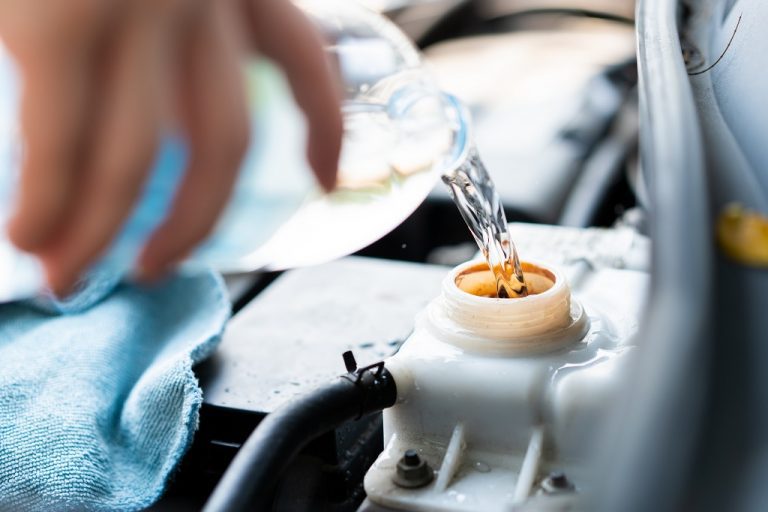
Water on its own can’t protect your car’s engine from freezing because it doesn’t have a wide enough range between its boiling and freezing points. Also, it doesn’t soak up heat as well. In an absolute emergency, you can use water instead of coolant.
What happens if you don’t dilute coolant?
Pure antifreeze can’t keep the engine cool because it can’t hold enough heat. In fact, putting pure antifreeze in the cooling system cuts the ability to transfer heat by 35%, which could really hurt the engine in hot weather.

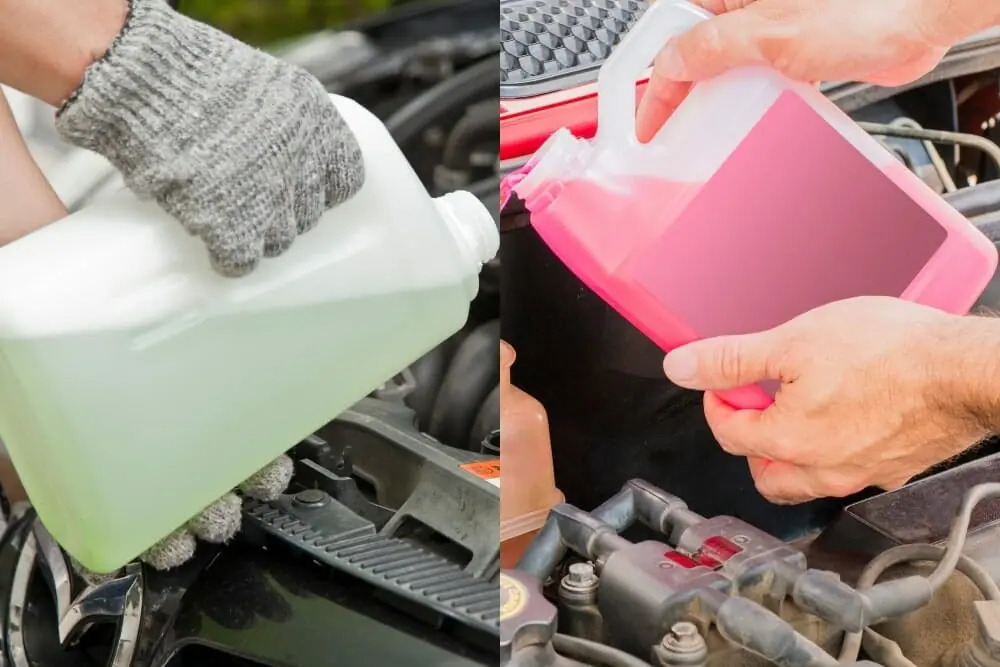
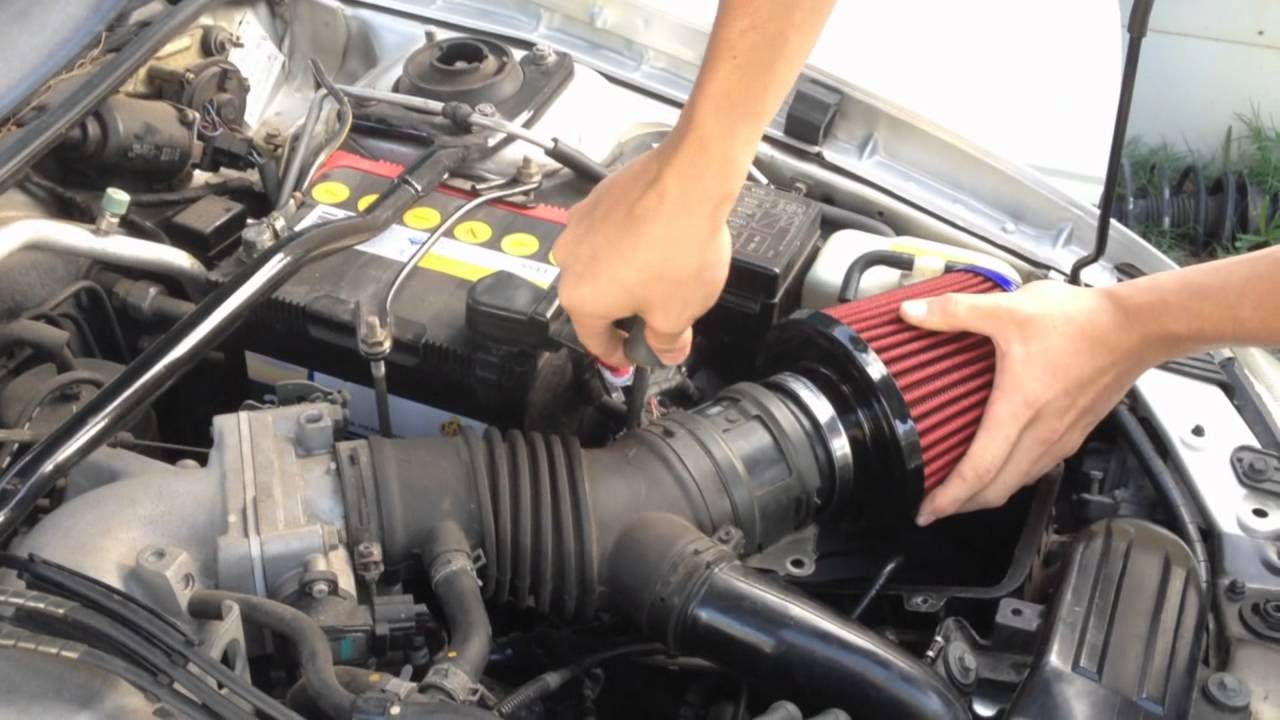
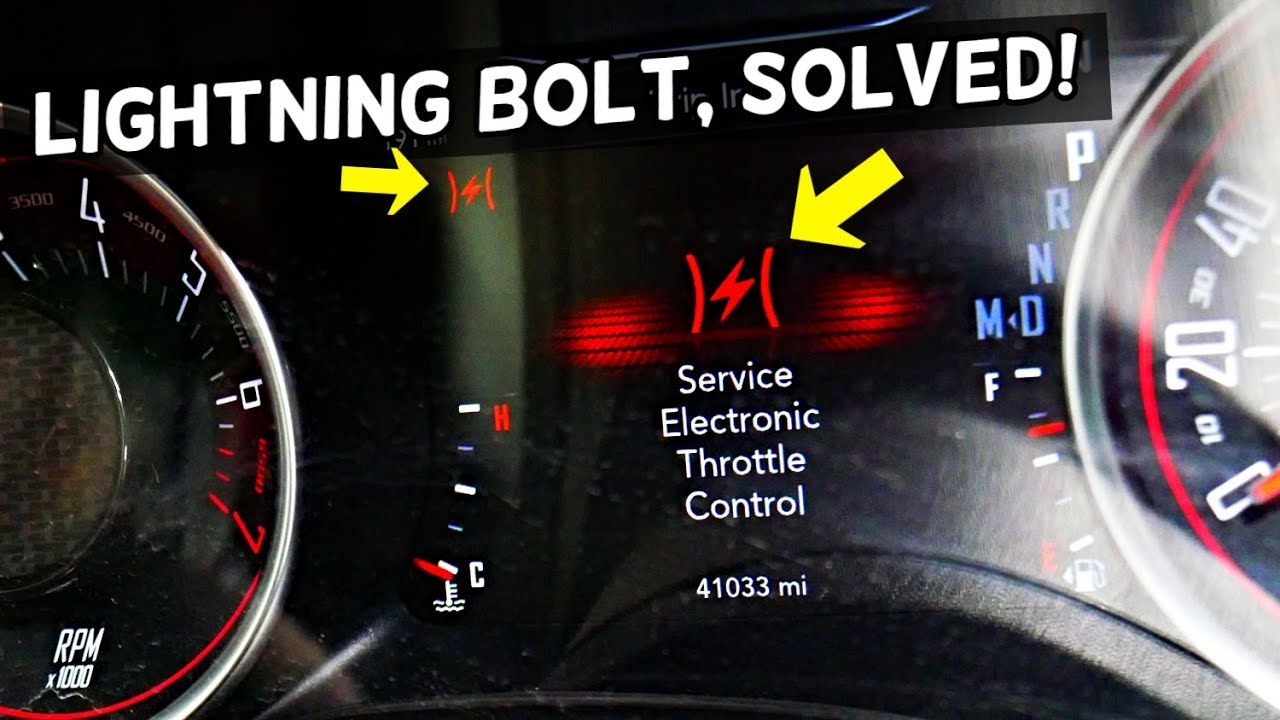
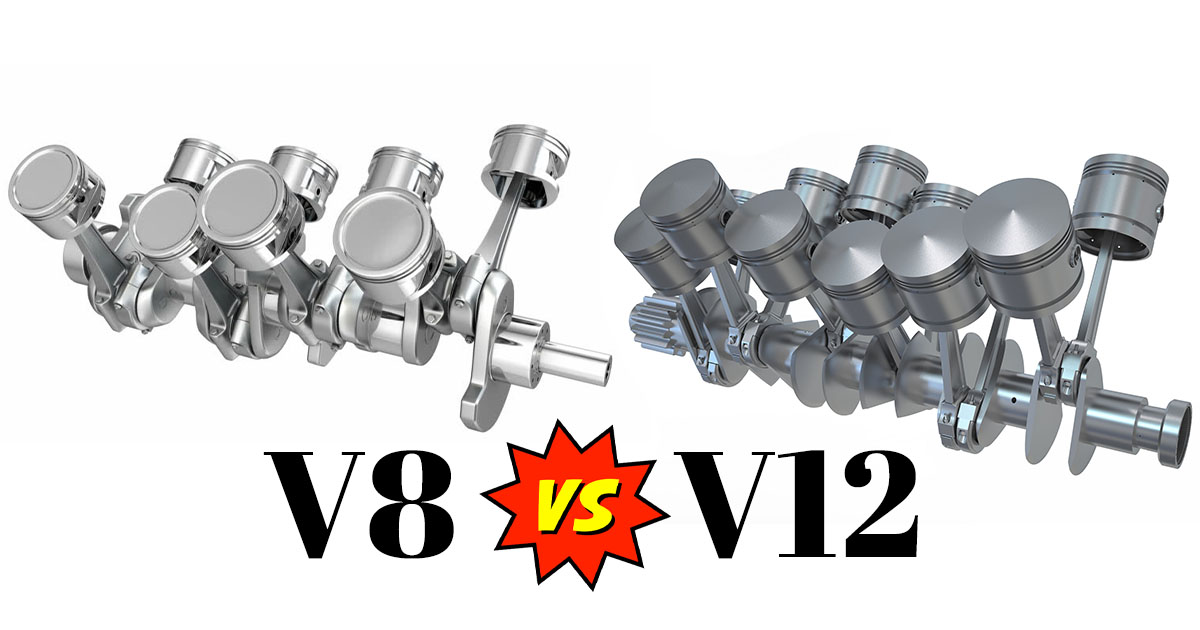
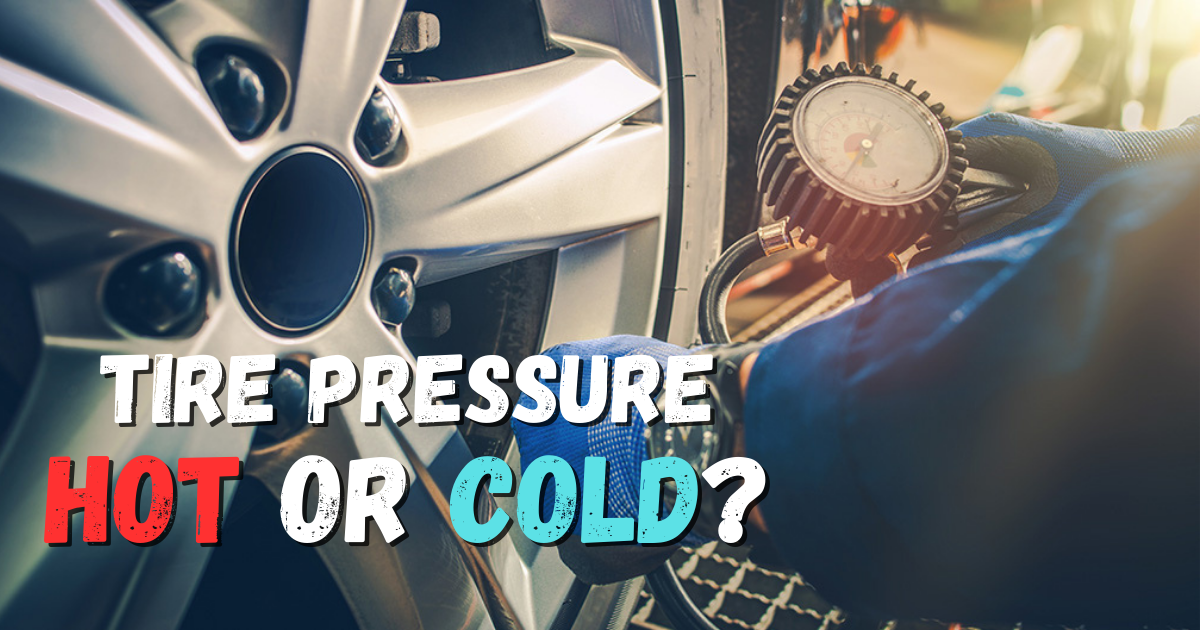
Great info, thanks.